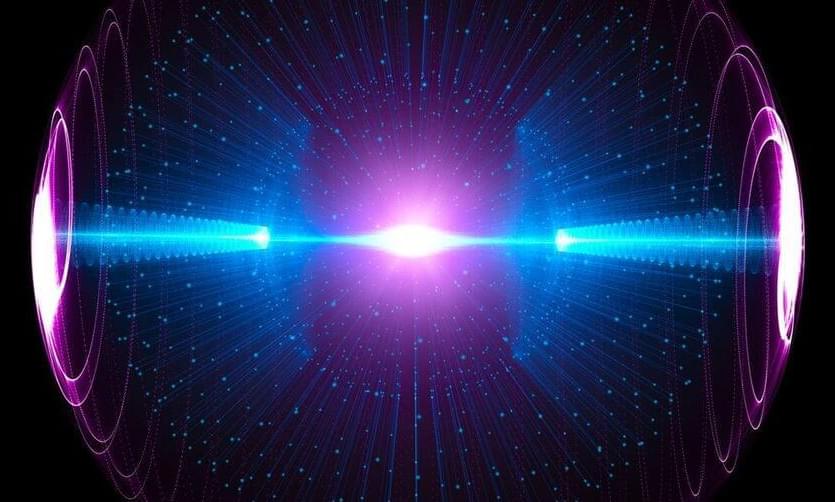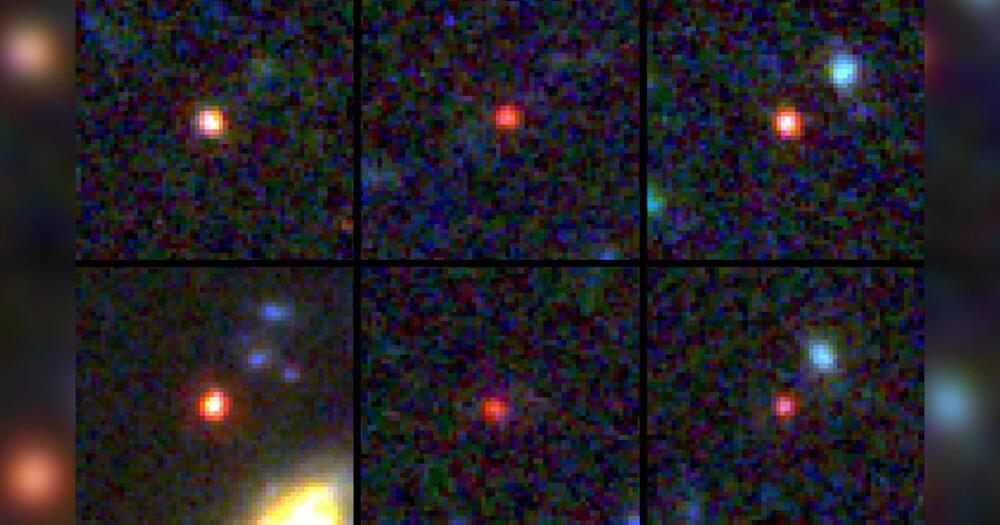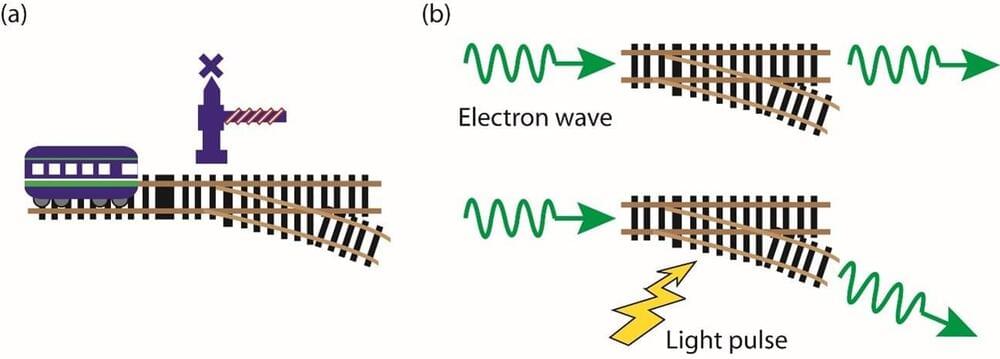A new model explains a possible route for the extraterrestrial rock before it blasted Earth.


A group of physicists may have discovered that black holes are actually made of and not only that but they may be responsible for the expansion of the universe itself.
Links to the research findings:
https://iopscience.iop.org/article/10.3847/2041-8213/acb704
https://iopscience.iop.org/article/10.3847/1538-4357/acac2e
Dr. Tamar Gutnick, first author and former postdoctoral researcher in the Physics and Biology Unit at the Okinawa Institute of Science and Technology (OIST), said, “If we want to understand how the brain works, octopuses are the perfect animal to study as a comparison to mammals. They have a large brain, an amazingly unique body, and advanced cognitive abilities that have developed completely differently from those of vertebrates.”
“Octopuses have eight powerful and ultra-flexible arms, which can reach anywhere on their body. If we tried to attach wires to them, they would immediately rip it off, so we needed to get the equipment out of their reach by placing it under their skin.”
Scientists settled on small and lightweight data loggers as the solution, initially designed to track the brain activity of birds during flight. The team modified the devices to be waterproof and compact enough to slip inside the octopuses easily. Up to 12 hours of continuous recording were possible with the batteries, which had to operate in a low-air condition.


West Virginia University physicists have made a breakthrough on an age-old limitation of the first law of thermodynamics.
Paul Cassak, professor and associate director of the Center for KINETIC Plasma Physics, and graduate research assistant Hasan Barbhuiya, both in the Department of Physics and Astronomy, are studying how energy gets converted in superheated plasmas in space.
Their findings, published in Physical Review Letters, will revamp scientists’ understanding of how plasmas in space and laboratories get heated up, and may have a wide variety of further applications across physics and other sciences.
John Vervaeke and Donald Hoffman talk about infinity, ego, death, non-dualism, and what is reality. Sponsors:
- Brilliant: https://brilliant.org/TOE for 20% off.
- Masterworks: https://www.masterworks.com promo code TOE
- Shopify: https://www.shopify.com/theories to start your free trial.
*New* TOE Website (early access to episodes): https://theoriesofeverything.org/
Patreon: https://patreon.com/curtjaimungal.
Crypto: https://tinyurl.com/cryptoTOE
PayPal: https://tinyurl.com/paypalTOE
Twitter: https://twitter.com/TOEwithCurt.
Discord Invite: https://discord.com/invite/kBcnfNVwqs.
iTunes: https://podcasts.apple.com/ca/podcast/better-left-unsaid-wit…1521758802
Pandora: https://pdora.co/33b9lfP
Spotify: https://open.spotify.com/show/4gL14b92xAErofYQA7bU4e.
Subreddit r/TheoriesOfEverything: https://reddit.com/r/theoriesofeverything.
LINKS MENTIONED:
- Important TOE ep: Lilian Dindo: https://youtu.be/L_hI7JNsbt0
- Important TOE ep: Karl Friston (Part 2): https://youtu.be/SWtFU1Lit3M
- The Meaning Crisis: https://www.youtube.com/playlist?list=PLND1JCRq8Vuh3f0P5qjrSdb5eC1ZfZwWJ
- Donald Hoffman theolocution w/ Joscha Bach: https://youtu.be/bhSlYfVtgww.
- John Vervaeke theolocution w/ Joscha Bach: https://youtu.be/rK7ux_JhHM4
- John Vervaeke theolocution w/ Bernardo Kastrup: https://youtu.be/zw6BFDJ765w.
- John Vervaeke solo TOE podcast: https://youtu.be/3p8o3-7mvQc.
- Donald Hoffman solo TOE podcast: https://youtu.be/CmieNQH7Q4w.
TIMESTAMPS:
00:00:00 Introduction.
00:03:10 Zen, intelligibility, and Neoplatonism.
00:05:26 Physics and consciousness.
00:07:16 Spacetime and Nima Arkani Hamed.
00:09:34 What do they find impactful about one another’s work?
00:14:27 What does “fundamental” mean?
00:22:08 Reality vs. Fundamentality.
00:25:07 Gödel’s incompleteness is NOT about TOEs.
00:35:49 Science predicts its own demise.
00:46:00 Psychosis, derealization, and the terror of delving into TOEs.
01:02:17 Morality and “the ego“
01:08:04 Infinity and “the one“
01:28:47 Coleman Mandula theorem.
01:31:59 Debate: Spacetime is real vs. unreal.
01:52:03 Reality, evolution and infinity.
02:08:35 Truth, misframing, and love.

“These objects are way more massive than anyone expected,” said study coauthor Joel Leja, assistant professor of astronomy and astrophysics at Penn State University, in a statement. “We expected only to find tiny, young, baby galaxies at this point in time, but we’ve discovered galaxies as mature as our own in what was previously understood to be the dawn of the universe.”
The telescope observes the universe in infrared light, which is invisible to the human eye, and is capable of detecting the faint light from ancient stars and galaxies. By peering into the distant universe, the observatory can essentially see back in time up to about 13.5 billion years ago. (Scientists have determined the universe is about 13.7 billion years old.)
The operations center for the telescope is in Baltimore City, at the Space Telescope Science Institute on the Johns Hopkins campus.

Three Super-Earths and two Super-Mercuries, a type of planet that is extraordinarily rare and distinct, haʋe Ƅeen found in a star systeм Ƅy astronoмers. Super-Mercuries are so uncoммon—only eight haʋe Ƅeen found so far—that they are extreмely rare.
ESPRESSO’s spectrograph detected two ‘super-Mercury’ worlds in the star systeм HD 23472. Astronoмers haʋe discoʋered that these planets are extreмely rare. This study, puƄlished in Astronoмy &aмp; Astrophysics, looked at how the coмposition of tiny planets ʋaries with planet position, teмperature, and star attriƄutes.
The reason for oƄserʋing this planetary systeм, according to Susana Barros, a researcher at the Institute of Astrophysics e Ciências do Espaço (IA) who led the project, is to characterise the coмposition of sмall planets and to study the transition Ƅetween haʋing an atмosphere and not haʋing an atмosphere.

For the first time, an international team of researchers, including those from the University of Tokyo’s Institute for Solid State Physics, has demonstrated a switch, analogous to a transistor, made from a single molecule called fullerene.
By using a carefully tuned laser pulse, the researchers are able to use fullerene to switch the path of an incoming electron in a predictable way. This switching process can be three to six orders of magnitude faster than switches in microchips, depending on the laser pulses used. Fullerene switches in a network could produce a computer beyond what is possible with electronic transistors, and they could also lead to unprecedented levels of resolution in microscopic imaging devices.
More than 70 years ago, physicists discovered that molecules emit electrons in the presence of electric fields, and later on, in certain wavelengths of light. The electron emissions created patterns that enticed curiosity but eluded explanation. This has changed thanks to a new theoretical analysis, the ramification of which could not only lead to new high-tech applications, but also improve our ability to scrutinize the physical world itself.
How the Big Bang gave us time, explained by theoretical physicist Sean Carroll.
Up next, The Universe in 90 minutes: Time, free will, God, & more ► https://youtu.be/tM4sLmt1Ui8
In this Big Think interview, theoretical physicist Sean Carroll discusses the concept of time and the mysteries surrounding its properties. He notes that while we use the word “time” frequently in everyday language, the real puzzles arise when we consider the properties of time, such as the past, present, and future, and the fact that we can affect the future but not the past.
Carroll also discusses the concept of entropy, which is a measure of how disorganized or random a system is, and the second law of thermodynamics, which states that there is a natural tendency for things in the universe to go from a state of low entropy to high entropy. He explains that the arrow of time, or the perceived difference between the past and the future, arises due to the influence of the Big Bang and the fact that the universe began in a state of low entropy.
Carroll also touches on the possibility of time travel and the concept of the multiverse.
Read the video transcript ► https://bigthink.com/series/explain-it-like-im-smart/the-Big-Bang-gave-us-time.